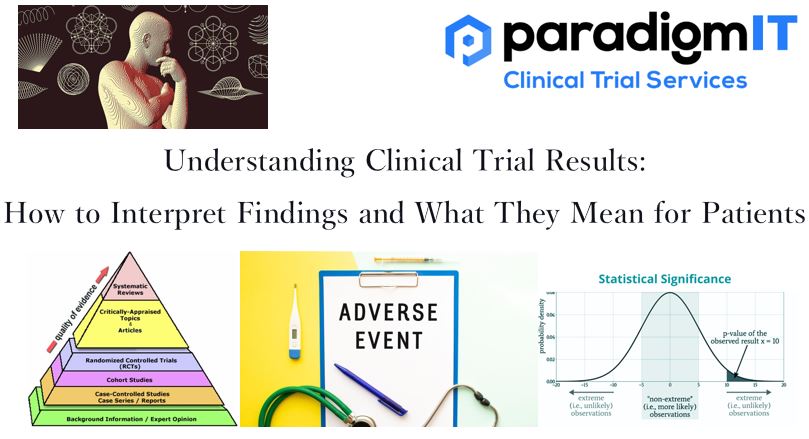Clinical trials are impactful only when we can draw meaningful conclusions from them. Interpreting clinical trial results is an essential task for healthcare professionals and patients alike. Understanding the findings can provide valuable insights into the safety, efficacy, and potential benefits or risks of a new medical intervention. Here are some key points to consider when interpreting clinical trial results and what they mean for patients.
- Study Design: One of the most important factors to consider while interpreting clinical trial findings is the trial design or study method. For instance, a Randomized Controlled Trial with a placebo-controlled double-blind design is less prone to bias than unblinded studies.
- Objectives and Endpoints: Secondly, clinical trials with tangible clinical outcomes can be more straightforwardly interpreted than those with non-clinical outcomes or surrogate endpoints. Other crucial aspects while understanding clinical trial results would be the characteristics of the study sample, dropout rate, possibility of false positive or false negative conclusions and overall risks v/s benefit analysis.
- Clinical and Statistical Significance: Clinical trials can often provide crucial pieces of evidence for clinical decision-making. But before such extrapolation and widespread application, it is critical to understand if the trial results have validity. i.e. Are the results primarily an outcome of the trial intervention, or are the results due to confounding bias and other chance factors? To understand if the results are statistically significant enough to matter to patients in clinical practice, one should analyze the clinical usefulness and relevance of the results.
Statistical significance indicates that the observed effects are unlikely to have occurred by chance. It is typically represented by p-values or confidence intervals. A lower p-value (e.g., p<0.05) suggests stronger evidence of a treatment effect.
- Safety and Adverse Events: Examine the safety data and adverse events reported during the trial. Assess the frequency and severity of adverse events and compare them with the benefits of the intervention. Balancing efficacy and safety is crucial when evaluating potential treatment options.
- Subgroup Analysis and Baseline Characteristics: Subgroup analysis examines how the intervention affects specific populations or individuals with particular characteristics. It can provide valuable insights into the intervention’s effectiveness in different patient groups. Additionally, comparing the baseline characteristics of the study groups ensures they are comparable, minimizing biases and increasing the validity of the results.
- Reproducibility, Generalizability, and Limitations: Reproducibility of trial results strengthens their reliability. While interpreting clinical trials, it is also possible to encounter other clinical trials with seemingly different results for the same intervention. In that case, it is pertinent to understand the actual settings and protocols under which the clinical trials occurred. Furthermore, recognizing the limitations of the trial, such as small sample sizes or confounding factors, helps contextualize the findings appropriately.
Critical evaluation of clinical trial results can be rigorous yet rewarding. If extrapolated well, some results can benefit the patients by leading to more efficient and evidence-based healthcare decisions. To avoid ambiguity, it is always better if the measured outcomes are reproducible and precise. To ensure standard reporting and interpretation of clinical trials, we have protocols such as CONSORT (Consolidated Standards of Reporting Trials) and SPRIT (Standard Protocol Items: Recommendations for Interventional Trials).
In conclusion, since clinical trial results are highly nuanced, it is always prudent for clinical researchers and clinicians to deploy adequate precautionary protocols and corroborate shreds of evidence from different sources before framing conclusions or drafting clinical recommendations for patients.
For more information –
Visit our website – www.paradigmit.com
Or you can write us at ask@paradigmit.com
Follow us for more – https://www.linkedin.com/company/paradigmittechnologyservices/?viewAsMember=true


